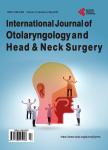Adenoid Cystic Carcinoma of the Head and Neck:Epidemiology and Predictors of Prognosis
腺样囊性癌的头部和颈部:流行病学和预测预后作者机构:Department of Otorhinolaryngology and Head and Neck SurgerySaint Antonio HospitalPortoPortugal Department of Otorhinolaryngology and Head and Neck SurgeryPortuguese Institute of OncologyPortoPortugal
出 版 物:《International Journal of Otolaryngology and Head & Neck Surgery》 (耳鼻喉(英文))
年 卷 期:2013年第2卷第5期
页 面:165-173页
学科分类:1002[医学-临床医学] 100214[医学-肿瘤学] 10[医学]
主 题:Adenoid Cystic Carcinoma Head and Neck Cancer Prognostic Factors
摘 要:Objectives: The biologic behavior of the adenoid cystic carcinoma (ACC) and the factors predicting outcome for these tumors are still poorly understood. Our objective is to analyze the predicting factors and the value of different treatment possibilities, since none sole treatment has been standardized. Methods: A retrospective analysis of the epidemiologic, clinical and histologic aspects of ACC, as well as treatment options and other prognostic factors of all the cases of ACC of the head and neck treated at this Institution were analyzed. From 1974 until 2011, 152 patients were diagnosed with ACC and treated at the Portuguese Institute of Oncology (Porto Centre). Main outcome measures: overall survival, local recurrence and distant metastasis were calculated by the Kaplan-Meier method. Factors predictive of outcome were identified by univariate and multivariate analysis. Results: The mean age at diagnosis was 55.8 years (range, 19-83 years). Incidence was higher in the female population, with a female to male ratio of 1.7:1 respectively. The primary tumor location was hard palate and submandibular region in 56 cases, 28 in each location (24.6%), parotid gland (17 cases, 14.9%) and oral cavity excluding palate (16 cases, 14%).Distributions according to T stage were: T1 (29.8%);T2 (30.7%);T3 (17.5%);T4 (22%). The overall 1-year, 5-year and 10-year survival for all patients were 94.6%, 60.5%, 41.6%, respectively. Conclusions: Univariate survival analysis revealed that age older than 60 years (p = 0.002), solid histologic subtype (p = 0.042), advanced clinical stage (p p = 0.036) were correlated with a poor survival. Multivariate analysis confirmed that age and advanced clinical stage were worst independent predicators of overall survival as well as perineural invasion for local recurrence and distant metastasis. In our analysis, radiotherapy did not have a relevant impact on survival, except in cases of solid histologic subtype. To analyze distant metastatic capacity



